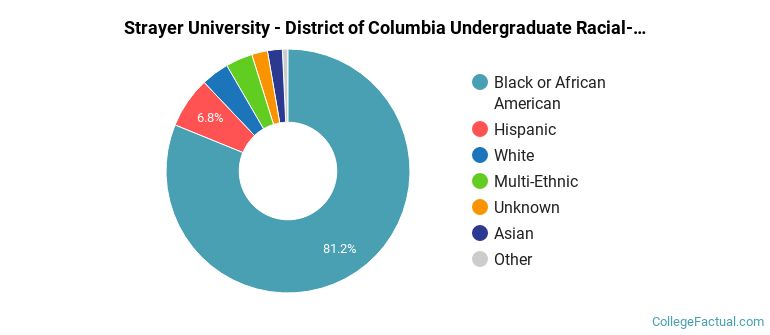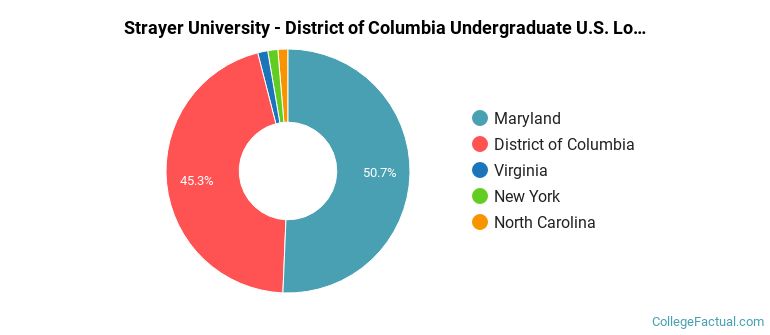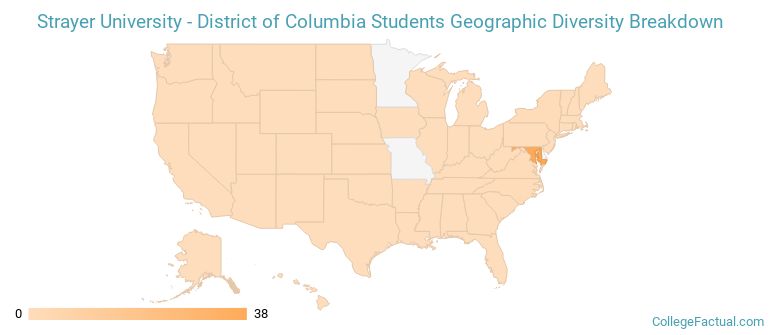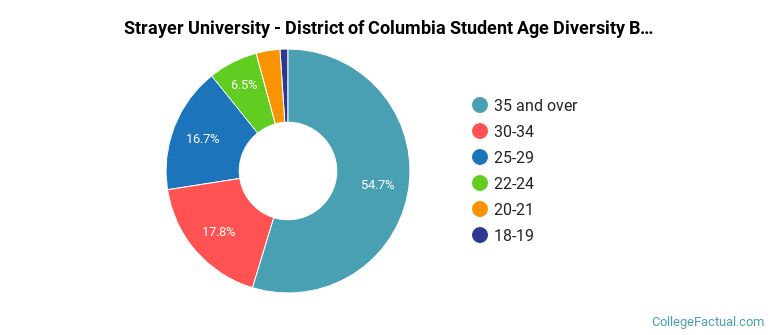 by our College Data Analytics Team
by our College Data Analytics TeamStrayer University - District of Columbia total enrollment is approximately 745 students. 60 are undergraduates and 24 are graduate students.
Male/Female Breakdown of Undergraduates
The full-time Strayer University - District of Columbia undergraduate population is made up of 40% women, and 60% men.

For the gender breakdown for all students, go here.
Strayer University - District of Columbia Racial/Ethnic Breakdown of Undergraduates

| Race/Ethnicity | Number |
|---|---|
| Asian | 19 |
| Black or African American | 19 |
| Hispanic | 7 |
| White | 7 |
| Multi-Ethnic | 5 |
| Unknown | 2 |
| Native Hawaiian or Pacific Islander | 1 |
| International | 0 |
See racial/ethnic breakdown for all students.
Male/Female Breakdown of Graduate Students
About 46% of full-time grad students are women, and 54% men.

For the gender breakdown for all students, go here.
Strayer University - District of Columbia Racial-Ethnic Breakdown of Graduate Students

| Race/Ethnicity | Number |
|---|---|
| Black or African American | 19 |
| Hispanic | 3 |
| White | 1 |
| Multi-Ethnic | 1 |
| Asian | 0 |
| Native Hawaiian or Pacific Islander | 0 |
| International | 0 |
| Unknown | 0 |
See racial/ethnic breakdown for all students.

| Race/Ethnicity | Number |
|---|---|
| Black or African American | 564 |
| Hispanic | 56 |
| White | 50 |
| Multi-Ethnic | 30 |
| Asian | 28 |
| Unknown | 15 |
| Native Hawaiian or Pacific Islander | 1 |
| International | 0 |

There are approximately 541 female students and 204 male students at Strayer University - District of Columbia.
Strayer University - District of Columbia ranks 1,340 out of 2,183 when it comes to geographic diversity.
54.67% of Strayer University - District of Columbia students come from out of state, and 0% come from out of the country.

The undergraduate student body is split among 5 states (may include Washington D.C.). Click on the map for more detail.

| State | Amount |
|---|---|
| Maryland | 38 |
| District of Columbia | 34 |
| North Carolina | 1 |
| New York | 1 |
| Virginia | 1 |
A traditional college student is defined as being between the ages of 18-21. At Strayer University - District of Columbia, 4.17% of students fall into that category, compared to the national average of 60%.

| Student Age Group | Amount |
|---|---|
| 35 and over | 518 |
| 30-34 | 169 |
| 25-29 | 158 |
| 22-24 | 62 |
| 20-21 | 30 |
| 18-19 | 10 |
| Under 18 | 0 |
Footnotes
*The racial-ethnic minorities count is calculated by taking the total number of students and subtracting white students, international students, and students whose race/ethnicity was unknown. This number is then divided by the total number of students at the school to obtain the racial-ethnic minorities percentage.
References
Department of Homeland Security Citizenship and Immigration Services
Learn more about how College Factual creates their Diversity Rankings.